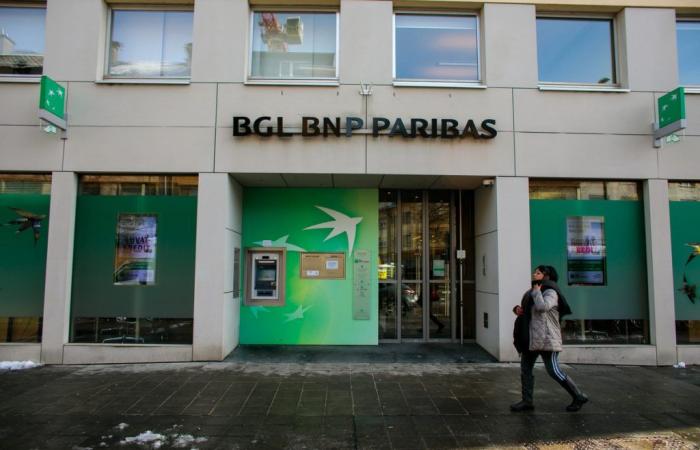The is putting a mortgage on its branch network in the country. A network that has already shrunk: the orange lion brand has gone from 16 branches in 2018 to nine currently (five open by appointment and four open all day). “We want to have larger branches and be able to better serve our Personal and Private Banking customers. We will therefore eventually focus on one or two larger branches,” ING tells us.
In any case, we can expect a further reduction in the overall network of bank branches in Luxembourg, which has seen a drastic decline in recent years. Between 2018 and today, the number of local service points has fallen:
– from 62 to 50 to the Savings bank;
– from 63 to 40 chez Post Finance;
– from 38 to 29 chez Raiffeisen;
– from 41 to 28 chez BGL BNP Paribas;
– from 40 to 22 to the Was.
The latest annual study by the Association of Banks and Bankers Luxembourg (ABBL) on retail banking shows a contrasting reality. On the one hand, the country remains well covered compared to its neighbors: with 34 branches per 100,000 inhabitants, Luxembourg ranked in 2021 behind France (53) but ahead of Belgium (33), Germany (28) and the Netherlands (5). This good coverage, the head of communications at the ABBL, Paul Wilwertz, attributes to two factors: “Luxembourg is a proximity market, very local, where people know each other. And it is a very competitive market, with a good offer in terms of retail.”
Covid has accelerated the digitalization of banking services, particularly payments.
Ananda Kautz, member of the management, ABBL
The study nevertheless confirms the underlying trend. Between 2021 and 2022 alone, the number of bank branches in Luxembourg fell from 221 to 197 (-11%). “Covid has accelerated the digitalisation of banking services, particularly payments. In many areas, Luxembourg is even at the top of the European basket in terms of new behaviours or acceptance of innovative solutions,” explains the head of innovation, payments and sustainability at ABBL, .
The number of cash withdrawals in bank branches has thus fallen sharply in 2022 compared to the pre-Covid year 2019 (-60%), as have money transfers made in branches (-56%), according to the ABBL. Another point noted by the Association: Luxembourg occupies third place in Europe – behind the Netherlands and Finland – for peer-to-peer payments made via mobile applications. The same trend applies to instant payments, where “Luxembourg residents are the most active in Europe in considering access to this new functionality”.
Physical needs in digital assistance
Customers have therefore significantly changed the way they interact with the bank. The widespread use of online services is accompanied by a substantial increase in the number of phone calls and emails, the institutions say. “The role of bank branches and the services provided there have changed considerably. Customers go to branches much less often, and when they do, it is for a specific need, for which they expect advice, most of the time by appointment,” summarizes BIL, where “counters have almost disappeared.”
Spuerkeess confirms the increased role of advice in its services. Example: “Real estate advice has evolved to become a specialty in itself. Previously managed by the branch manager, this area now requires dedicated specialists due to its increased complexity and stricter regulations.” With the rise of online services, the need for digital assistance is also increasing: “For example with LuxTrust Mobile, especially with the announced disappearance of tokens. Although this remains rather occasional, it represents a lot of time in advice,” says the State Bank and Savings Bank.
In small offices, improvements are often very difficult to implement.
Gabriel de La Bourdonnaye, director, Post Finance
The functions of the bank branches have therefore adapted to the changing needs of the customers. At Post Finance, the decisive criteria for the diversification of the sales network are: “extended opening hours, a comprehensive offering in the areas of mail, finance and telecom, competent and friendly customer service as well as a central location, or even easy access by public transport”. However, the postal bank makes no secret of this: “Especially in small offices, these improvements are often very difficult to implement.”
At Raiffeisen, the branches have become either “full branches” offering the entire range of the bank’s services, or “advice branches” focusing only on customer advice. For its part, BGL BNP Paribas says it has “adapted the design, opening hours and telephone accessibility of [ses] agencies by making them evolve more towards a meeting place rather than a simply operational place”.
(What is the place of agencies in the commercial strategy of retail banks? Paperjam will return to this in a second article this week.)






